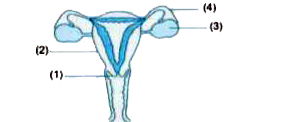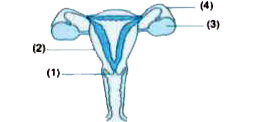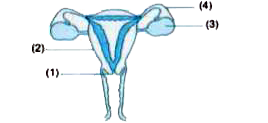Which of the following experiments have equally likely outcomes? Explain. (i) A driver attempts to start a car. The car starts or does not start. (ii) A player attempts to shoot a basketball. She/he shoots or misses the shot. (iii) A trial is made to answer a question . the answer is right or wrong . (iv) A baby is born . it is a boy or a girl .
Step by step video solution for Which of the following experiments have equally likely outcomes? Explain. (i) A driver attempts to start a car. The car starts or does not start. (ii) A player attempts to shoot a basketball. She/he shoots or misses the shot. (iii) A trial is made to answer a question . the answer is right or wrong . (iv) A baby is born . it is a boy or a girl . by Maths experts to help you in doubts & scoring excellent marks in Class 10 exams.
Updated on:21/07/2023Similar Questions
Which of the following experiments have equally likely outcomes? Explain.(i) A driver attempts to start a car. The car starts or does not start.(ii) A player attempts to shoot a basketball. She/he shoots or misses the shot.(iii) A trial is made to answer a true-false question. The answer is right or wrong.(iv) A baby is born. It is a boy or a girl.
View SolutionWhich of the following experiments have equally likely outcomes? Explain.
A driver attempts to start a car. The car starts or does not start.
View Solution
Knowledge Check
Which among the following statements with regard to Raja Ram Mohan Roy are correct?
I. He started the Atmiya Sabha
II. He wrote the Gift of Monotheist
III. He published the Percepts of Jesus
IV. He founded the Brahmo Sabha
Select the correct answer using the code given belowAII, III and IV onlyBI, II and III onlyCI, III and IV onlyDI, II, III and IV
Which of the following experiments have equally likely outcomes? Explain.
(i) A driver attempts to start a car. The car starts or does not start.
(ii) A player attempts to shoot a basketball. She/he shoots or misses the shot.
(iii) A trial is made to answer a true-false question. The answer is right or wrong.
(iv) A baby is born. It is a boy or a girl.
View SolutionWhich of the following experiments have equally likely outcomes? Explain.
A baby is born. It is a boy or a girl.
View SolutionWhich of the following experiments have equally likely outcomes? Explain.
A player attempts to shoot a basketball. She/he shoots or misses the shot.
View SolutionWhich of the following experiments have equally likely outcomes? Explain.
A trial is made to answer a true-false question. The answer is right or wrong.
View SolutionAnswer question on the basis of your understanding of the following paragraph and the related studied concepts :
(i) When a girl is born, the ovaries already contain thousands of immature eggs
(ii) On reaching puberty, some of these start maturing. One egg is produced every month by one of the ovaries.
(iii) The egg is carried from the ovary to the womb through a thin oviduct or fallopian tube.
(iv) The two oviducts unite into an elastic bag-like structure known as the uterus.
(v) The uterus opens into the vagina through the cervix.

What is the site of fertilisation ?
View SolutionAnswer question on the basis of your understanding of the following paragraph and the related studied concepts :
(i) When a girl is born, the ovaries already contain thousands of immature eggs
(ii) On reaching puberty, some of these start maturing. One egg is produced every month by one of the ovaries.
(iii) The egg is carried from the ovary to the womb through a thin oviduct or fallopian tube.
(iv) The two oviducts unite into an elastic bag-like structure known as the uterus.
(v) The uterus opens into the vagina through the cervix.

Give suitable terms for starting and ending of reproductive phase in human females.
View SolutionAnswer question on the basis of your understanding of the following paragraph and the related studied concepts :
(i) When a girl is born, the ovaries already contain thousands of immature eggs
(ii) On reaching puberty, some of these start maturing. One egg is produced every month by one of the ovaries.
(iii) The egg is carried from the ovary to the womb through a thin oviduct or fallopian tube.
(iv) The two oviducts unite into an elastic bag-like structure known as the uterus.
(v) The uterus opens into the vagina through the cervix.

How many eggs are produced each month and why ?
View Solution
